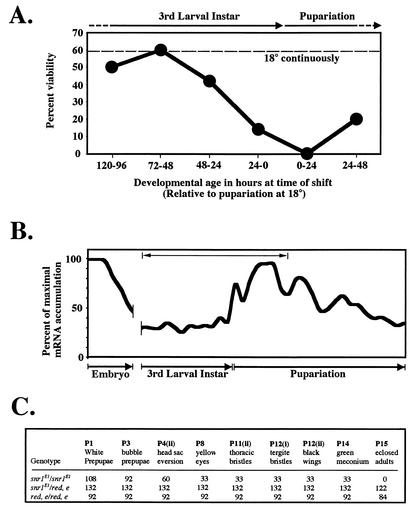FIG. 3.
Essential function of SNR1 during metamorphosis. (A) Temperature shift of snr1E1 revealed a critically sensitive period during the transition from larval to pupal development. Flies (0- to 24-h collections) were raised at 18°C until the times indicated (expressed as hours of development relative to pupariation), shifted to 29°C for 24 h, and then shifted back to 18°C for the remainder of development. The percentage of emerged snr1E1 homozygous adults relative to control siblings was calculated following each shift point and for flies raised continuously at 18°C (dashed line). The approximate developmental stage (at 18°C) relative to each shift point is indicated above the graph. (B) RNA accumulation of snr1 during development. Northern blot analysis of snr1 was performed with specific riboprobes hybridized to developmentally staged mRNA from wild-type flies raised at 25°C. Hybridization signals were quantified and plotted relative to maximal accumulation observed in 0- to 4-h embryos. The line above the graph represents the approximate developmental time period that correlates with the time points shown in panel A. (C) Homozygous snr1E1 pupae exhibit broad lethality during metamorphosis at 29°C. Prepupae (P1) of the genotypes indicated were collected and allowed to complete development (P15). Values represent the numbers of individuals from the original cohort that displayed the morphological marker characteristic of the pupal stage indicated (3).

